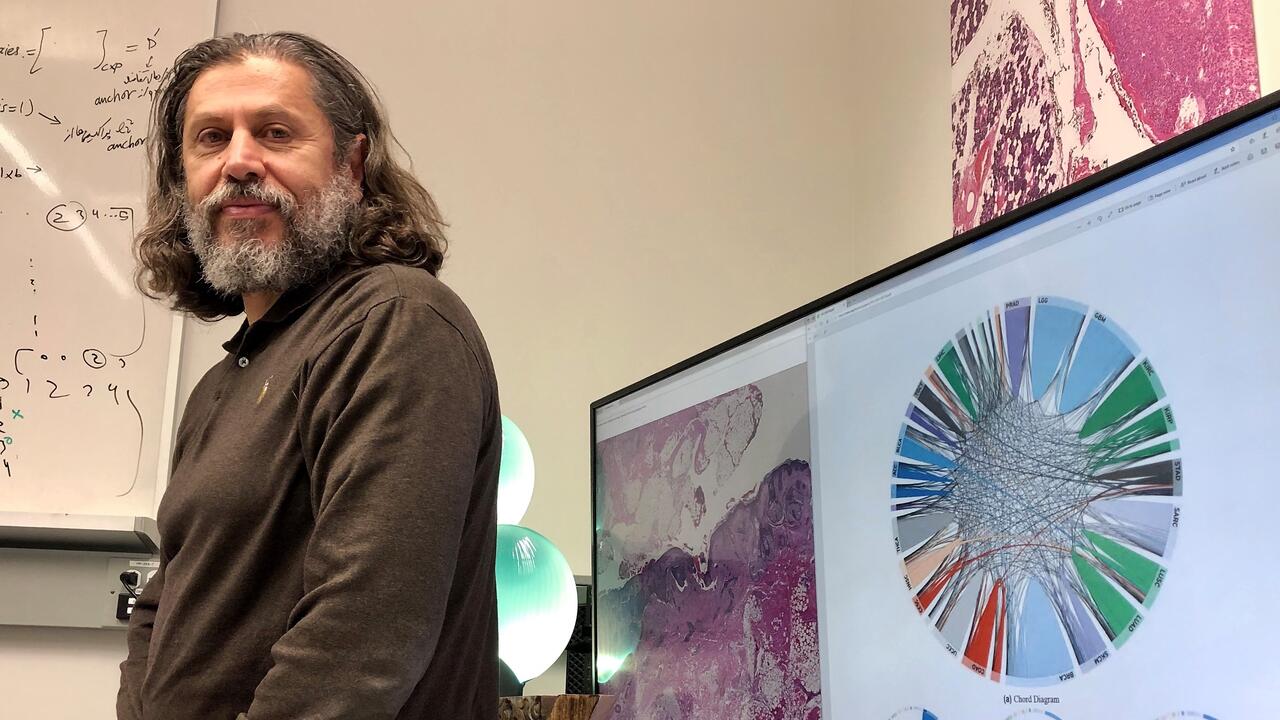
World's largest human tissue archive adopts Waterloo search system
Artificial intelligence technology will be used to help modernize US federal pathology facility

Artificial intelligence technology will be used to help modernize US federal pathology facility
By Brian Caldwell Faculty of EngineeringTechnology developed by engineering researchers at the University of Waterloo has been adopted by a major pathology facility in the United States.
The Joint Pathology Center (JPC), which has the world’s largest collection of preserved human tissue samples, will use an artificial intelligence (AI) search engine to index and search its digital archive as part of a modernization effort.
Development of the system was led by researchers at the Laboratory for Knowledge Inference in Medical Image Analysis (KIMIA Lab) at Waterloo. It was commercialized by partner Huron Digital Pathology of St. Jacobs.
The image retrieval technology, which is called Yottixel, allows pathologists, researchers and educators to search large archives of digital images to tap into rich diagnostic data.
It will be used to enhance biomedical research for infectious diseases and cancer, enabling easier data sharing to facilitate collaboration and medical advances.
"We are delighted to see that our algorithms are about to explore the world's largest digital archive of biopsy samples," said Hamid Tizhoosh, a systems design engineering professor and director of the KIMIA Lab. "We will continue to design and commercialize novel AI solutions for the medical field.
"The opportunity comes with unprecedented challenges that need fresh ideas and established competency to fully exploit big data for the diagnostic imaging of the future."
The JPC is the leading pathology reference centre for the US federal government and part of the US Defense Health Agency.
In the last century, it has collected more than 55 million glass slides and 35 million tissue block samples. Its data spans every major epidemic and pandemic, and was used to sequence the Spanish flu virus of 1918.
Modernization of the repository is expected to increase understanding and help fight the COVID-19 pandemic.
“The breadth and depth of information contained in JPC’s repository is a one-of-a-kind resource for the clinical, research and education community,” Patrick Myles, the CEO of Huron, said in a media release.
Researchers at Waterloo have obtained promising diagnostic results using their AI search technology to match digital images of tissue samples in suspected cancer cases with verified cases in a data base.
In a paper published earlier this year, they achieved accurate diagnoses for 32 kinds of cancer in 25 organs and body parts.
“We showed it is possible using this approach to get incredibly encouraging results if you have access to a large archive,” Tizhoosh said. “Image search is undoubtedly a platform to intelligently explore big data and enable what we call 'virtual peer review.' It is like putting many experts in a virtual room and having them reach consensus.”
Photo: Hamid Tizhoosh is director of the KIMIA Lab at Waterloo Engineering.

Read more
Here are the people and events behind some of this year’s most compelling Waterloo stories

Engineering master's student Nayeema Nonta (left), one of the three paper authors, and her supervisor, Dr. Sirisha Rambhatla, in a large server room with the computer power needed to develop their new LLM training technique. (University of Waterloo)
Read more
Waterloo researchers develop highly efficient AI training system that paves the way for cheaper, greener “intelligent partners”

Read more
Engineering researchers team up to tackle the plastics pollution problem with microbial innovation and engineering design
The University of Waterloo acknowledges that much of our work takes place on the traditional territory of the Neutral, Anishinaabeg, and Haudenosaunee peoples. Our main campus is situated on the Haldimand Tract, the land granted to the Six Nations that includes six miles on each side of the Grand River. Our active work toward reconciliation takes place across our campuses through research, learning, teaching, and community building, and is co-ordinated within the Office of Indigenous Relations.